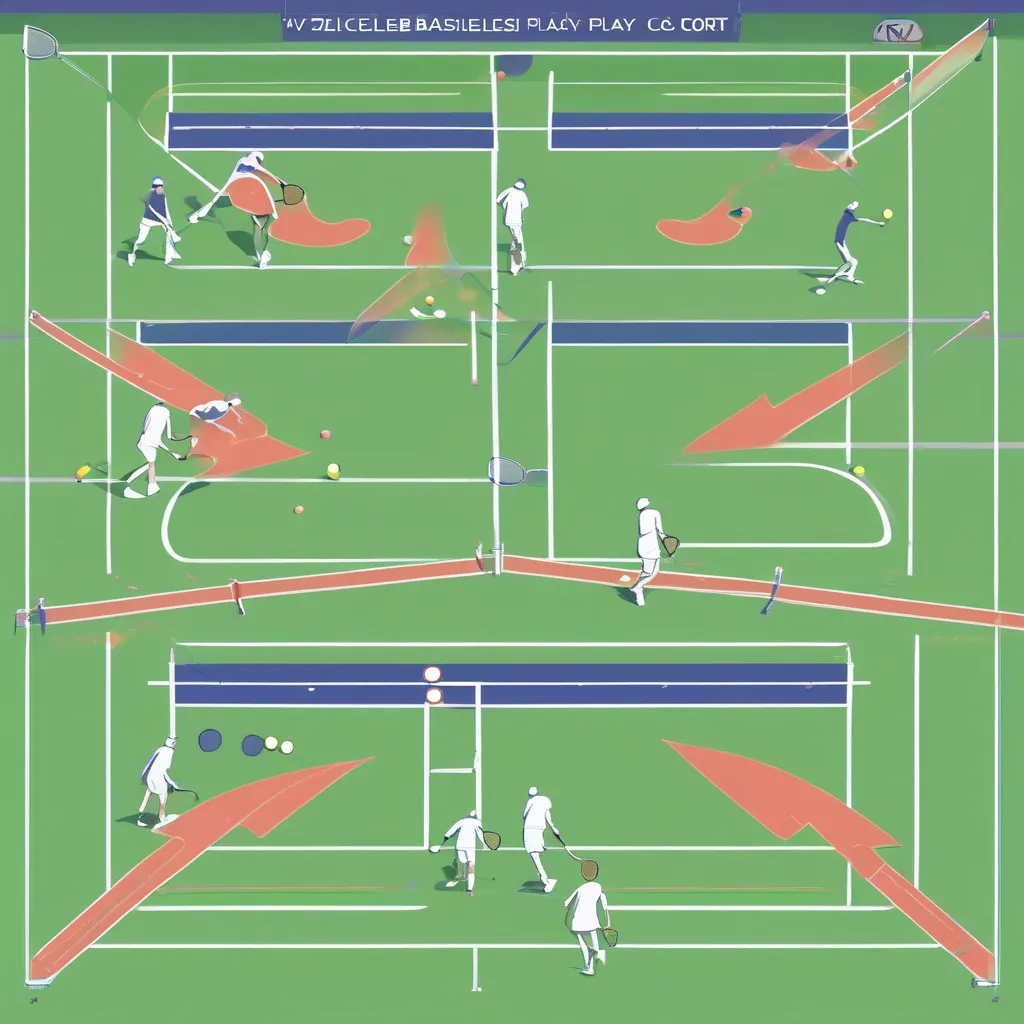Imagine this: you’re in a heated pickleball match, paddle in hand, ready to dominate. You’ve got the perfect serve, a killer volley, and a dink that could make your opponents weep. But you’re constantly running all over the court, expending unnecessary energy, and leaving gaps wide open for your opponents to exploit. What’s missing? An understanding of pickleball court positioning. Strategic positioning is the secret sauce that separates good players from great ones, transforming chaotic scrambles into controlled rallies and maximizing your chances of scoring. This article will delve into the why, where, and how of pickleball court positioning, equipping you with the knowledge to take your game to the next level.
Why is Court Positioning Crucial in Pickleball?
Court positioning in pickleball isn’t about standing still; it’s about dynamic movement that anticipates your opponent’s shots and optimizes your own. Proper positioning allows you to:
- Control the Center Court: The non-volley zone (NVZ or “kitchen”) is the heart of pickleball. Controlling this area gives you the upper hand in volleys and dinks, forcing your opponents to hit higher, more predictable shots.
- Reduce Reaction Time: By being in the optimal position, you’ll have more time to react to your opponents’ shots and make informed decisions about your next move. This translates to better shot selection and fewer errors.
- Cover More Ground Efficiently: Strategic positioning minimizes unnecessary movement, conserving your energy for crucial moments in the game. You’ll be able to cover both sides of the court effectively without exhausting yourself.
- Create Offensive Opportunities: Effective positioning sets you up for offensive shots, putting pressure on your opponents and increasing your chances of winning points.
Key Pickleball Court Positions and Strategies
The Ready Position
Your ready position is your home base, the stance you take between shots. Feet should be shoulder-width apart, knees bent, paddle up, and eyes focused on the ball. This allows for quick movement in any direction.
The Non-Volley Zone (NVZ)
The NVZ is a seven-foot area on either side of the net. Volleying is prohibited while standing within the NVZ, but once you establish positioning in the NVZ line, you can control the flow of the game. Returning to the NVZ line after hitting a groundstroke as a doubles team should be your number one priority and something you consistently practice.
The Baseline
The baseline is the back boundary of the court. It’s your starting point for serves and a strategic position for returning deep serves or lobs.
Mid-Court
This area is crucial for transitioning between the baseline and the NVZ. It’s where you’ll execute groundstrokes and prepare for your approach to the net.
Doubles Positioning: The Power of Two
In doubles, teamwork and communication are vital for effective positioning. The most common formation is side-by-side at the NVZ line after the serve and return have been made. A well-coordinated team will move as a unit, covering each other’s weaknesses and capitalizing on their strengths. For more insights into doubles strategies, check out Effective Pickleball Strategies for Mixed Doubles and Importance of Strategic Team Dynamics in Pickleball Doubles.
Common Mistakes and How to Avoid Them
- Standing too far back: This limits your ability to attack the net and gives your opponents more time to react.
- Not moving as a unit in doubles: This creates gaps in coverage, leaving your team vulnerable to well-placed shots. Working on partner drills can significantly improve your doubles game. See Best Partner Drills for Pickleball Doubles Training for some helpful exercises.
- Failing to return to the NVZ line after hitting a groundstroke: This leaves you stuck at the baseline, unable to execute volleys and leaving yourself open to drop shots.
- Ignoring your opponent’s position: Your positioning should always be in response to your opponent’s location and potential shots. Anticipate their moves and adjust accordingly.
 Pickleball Court Positioning
Pickleball Court Positioning
Mastering Pickleball Court Positioning: Practice Makes Perfect
Understanding the importance of pickleball court positioning is just the first step. Consistent practice and mindful play are essential for integrating these concepts into your game. Start by focusing on your ready position, then practice moving to the NVZ and returning to the baseline. In doubles, communicate with your partner and work on coordinated movements. As you gain experience, you’ll develop a natural sense of court awareness and strategic positioning, ultimately improving your overall performance and enjoyment of the game. Developing Strategic Partnerships in Doubles Play can offer valuable guidance on enhancing teamwork and communication on the court.
Conclusion
Pickleball court positioning is more than just where you stand; it’s a dynamic and strategic element of the game that directly impacts your success. By mastering the principles outlined in this article, you’ll be able to control the court, reduce reaction time, conserve energy, and create offensive opportunities. Remember, consistent practice and a focus on strategic movement will transform your game and elevate your pickleball experience. Now, get out on the court and put your newfound knowledge into action! What are your biggest challenges with court positioning? Share your thoughts and experiences in the comments below!
- Baker, Joe (Author)
- English (Publication Language)
- Bond, Payton (Author)
- English (Publication Language)
- Anderson, Brian (Author)
- English (Publication Language)
- Palcic, Lisa (Author)
- English (Publication Language)
- Foster, Blake (Author)
- English (Publication Language)
- Carnot, Prem (Author)
- English (Publication Language)
- Hall, Dennis (Author)
- English (Publication Language)
- Callahan, John (Author)
- English (Publication Language)
- Publishing, Fitness Research (Author)
- English (Publication Language)
- Arthur, S. M. (Author)
- English (Publication Language)









